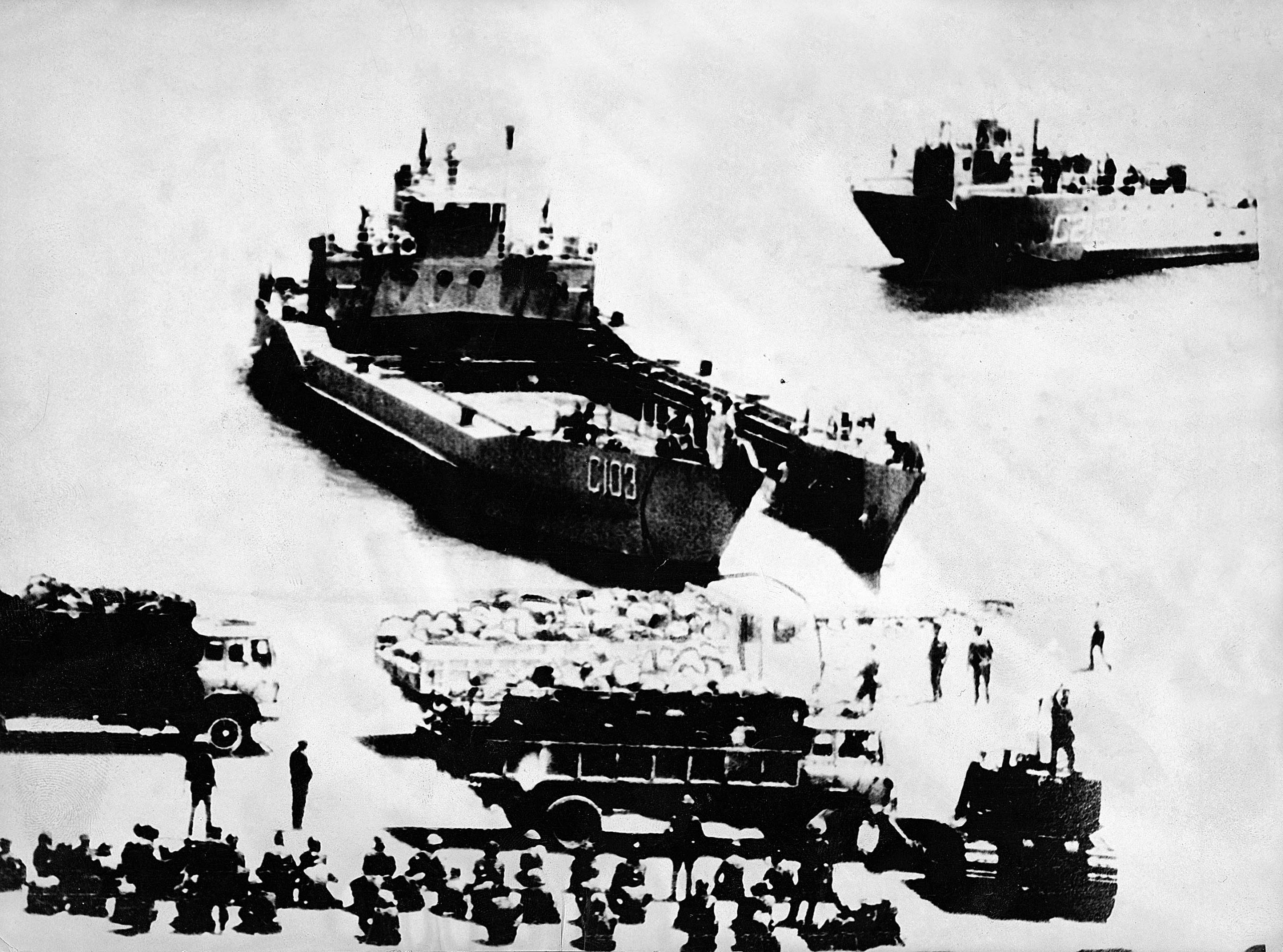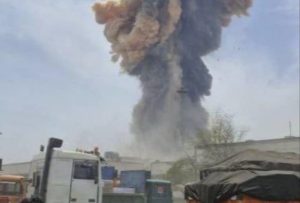Last month, the world marked the fiftieth anniversary of the Turkish invasion of Cyprus of July 20, 1974. Commemorations were dramatically different for the various nations involved. The world’s fixation on the July 20 date, missed the defining historical events and factors which shape the continuing “Cyprus problem.” Those events occurred after the July invasion and center on Turkey’s renewed military action, initiated on August 15.
For Turkey’s president, Recep Tayyip Erdoğan, the anniversary of July 20, was time to celebrate “Peace and Freedom Day,” when Turkish troops came to “put an end to the 11-year darkness enveloping Turkish Cypriots” and “brough them to freedom.” Describing North Cyprus as the “apple of Turkey’s eye,” Erdoğan emphasized the enduring and “ancient” bond between Turks and Turkish Cypriots.
In stark contrast, the Cypriot President, Nikos Christodoulides, lamented the “tragic anniversary,” emphasizing the human cost of Turkey’s military intervention, while criticizing the “condemnable and unacceptable events,” and Turkey’s continued “violation of human rights of the entire Cypriot people and for the violation of international law.”
The Turkish invasion, as news outlets like Reuters and others reminded readers back in July, left more than 3,000 Greek Cypriots dead, another 160,000 expelled as refugees, and led to the occupation of more than a third of the island by Turkish forces. But this is an incomplete story. Like most accounts of violence, it conflates complex events. While the beginning of conflict in Cyprus remains contentious—stories starting in 1955, 1963, 1974 all tell a different tale—we must consider how events after July 20 unfolded to get a full picture of the problems confronting Cyprus today.
The Turkish military operation which began on July 20 ended with a United Nations ceasefire resolution on July 22. Turkish troops were in possession of a small bridgehead compromising 3% of Cyprus. A few dozen Cypriots were killed and a few hundred were uprooted from their homes. Turkey’s intervention was a significant escalation, but it was not yet a humanitarian catastrophe. To understand what happened and what would happen, we need to look before July 20, 1974 for context.
After a fierce campaign against British colonial control aimed at the unification of Cyprus with Greece, Greek-Cypriot leaders agreed to a compromise of independence, supported by British, Turkish, and Greek leaders. All the parties had suffered through the inter-ethnic violence between Greek- and Turkish-Cypriots and worried about regional escalation.
When Cyprus became an independent country in 1960, Britain, Greece, and Turkey were given the right to intervene in the newly independent Republic of Cyprus. Intervention, under the terms of the 1960 Treaty of Guarantee, was “the right to take action with the sole aim [author’s emphasis] of re-establishing the state of affairs created by the present Treaty.”
The 1960 constitution created minority protections for the island’s Turkish-Cypriot community, which amounted to approximately 19 percent of island’s population. Thirty percent of the members of the public service and thirty percent of the seats of the House of Representatives were reserved for Turkish-Cypriots. The country’s vice-president would also be a Turkish-Cypriot with veto power over the executive actions of the Greek-Cypriot president. Unification with another state (read Greece or Turkey) was prohibited, as was the partition of the island.
This precarious arrangement did not endure long. In November 1963, President Makarios, who was also the Archbishop of Cyprus and a leader of the movement against Britain during the 1950s, submitted 13 points to revise the constitution. Among them, he called for the abolition of the Turkish-Cypriot vice-president’s veto and Turkish-Cypriot quotas.
By December 1963, open violence between Greek- and Turkish-Cypriots began. The two communities experienced the horrors of lethal violence, barricades, buffer zones, and displacement. Many Turkish-Cypriots were forced into restricted enclaves. More fighting between Greek- and Turkish Cypriots erupted in 1967.
In 1974, matters reached a head. Makarios’ pressure on the regime of the military junta in Athens during the summer spurred them to launch a coup to remove Makarios. This coup was launched on July 15. By July 19, Makarios was safely in New York at the United Nations where he denounced the junta’s coup as “an invasion from outside, in flagrant violation of the independence and sovereignty of the Republic of Cyprus.”
Turkey, which had prepared for an intervention in Cyprus for decades, needed no further excuse. Turkish troops landed in Cyprus and secured a beachhead. Across the island, violence spread between Greek- and Turkish-Cypriot communities. Quick reaction from the United Nations and diplomatic pressure, however, kept Turkish troops confined to the 3% of the island occupied between July 20 and 22. In spite of ceasefire violations, negotiations began for a peaceful resolution of the crisis.
Events outside of Cyprus moved rapidly. On July 23, the Greek junta collapsed. On July 24, the former Greek Prime Minister Konstantinos Karamanlis returned from his self-imposed exile in Paris and was sworn in as prime minister. In Cyprus, Nikos Sampson, who had replaced Makarios with the backing of the junta resigned and was temporarily replaced by Glafcos Clerides, the speaker of the Cypriot House of Representatives.
A first peace conference in Geneva between July 25 and July 30 yielded no results, but the sides promised to meet again beginning on August 14. In August, Turkey began by presenting various demands to Clerides, who asked for time to consider them. The next day, the Turkish government launched a second invasion of Cyprus. Exploding from the small bridgehead established in July, Turkish forces overran more than a third of the island with all the devastating consequences emphasized during this past July.
It is this August invasion that is largely responsible for the suffering of Cyprus today. That August invasion was the more lethal and more destructive operation. From a position occupying 3% of the island, Turkish forces conquered 37% of Cyprus. The circumstances of this second invasion are hardly justifiable. There was no coup in August. The Greek junta had fallen. Both Cyprus and Greece had restored democracy. In August 1974, Turkey already had a large and powerful military presence on the island to protect the Turkish-Cypriot minority. A restoration of the status quo from 1960 was possible. The August assault, however, occurred in complete violation of the 1960 agreement. The invasion created a de-facto partition, expressly prohibited by the 1960 Treaty of Guarantee. It had nothing to do with re-establishing the parameters of the 1960 constitution.
So, this year, we must commemorate and remember two invasions. One commenced under a thin legal pretext, but a legal pretext non-the-less, that had some sympathy internationally, and a limited humanitarian impact, and a second invasion undertaken in violation of international agreements, for the express purpose of territorial gain, with massive humanitarian impact. It is the impact of this second invasion that Cyprus truly struggles with today, and it is that invasion that world must remember when its leaders consider how to solve the “Cyprus problem” moving forward.
*Dr. Andrew Novo is a Professor of Strategic Studies at the National Defense University, Washington, D.C. He also teaches for the Johns Hopkins University program in Global Security Studies and the Georgetown School of Foreign Service. His most recent books are The EOKA Cause: Nationalism and the Failure of Cypriot Enosis (forthcoming 2021) and Restoring Thucydides: Testing familiar lessons and deriving new ones (2020) with Dr. Jay Parker.
The views expressed above are solely those of the author. They do not represent the views of National Defense University, the Department of Defense, or the United States Government.



